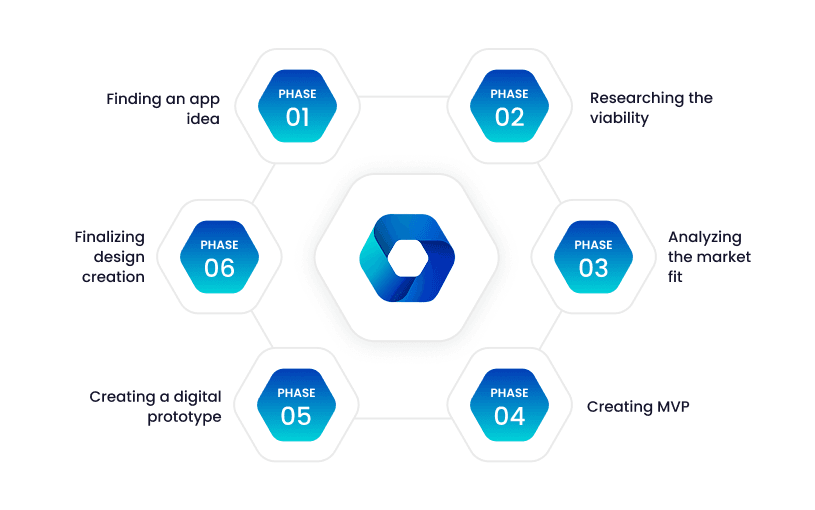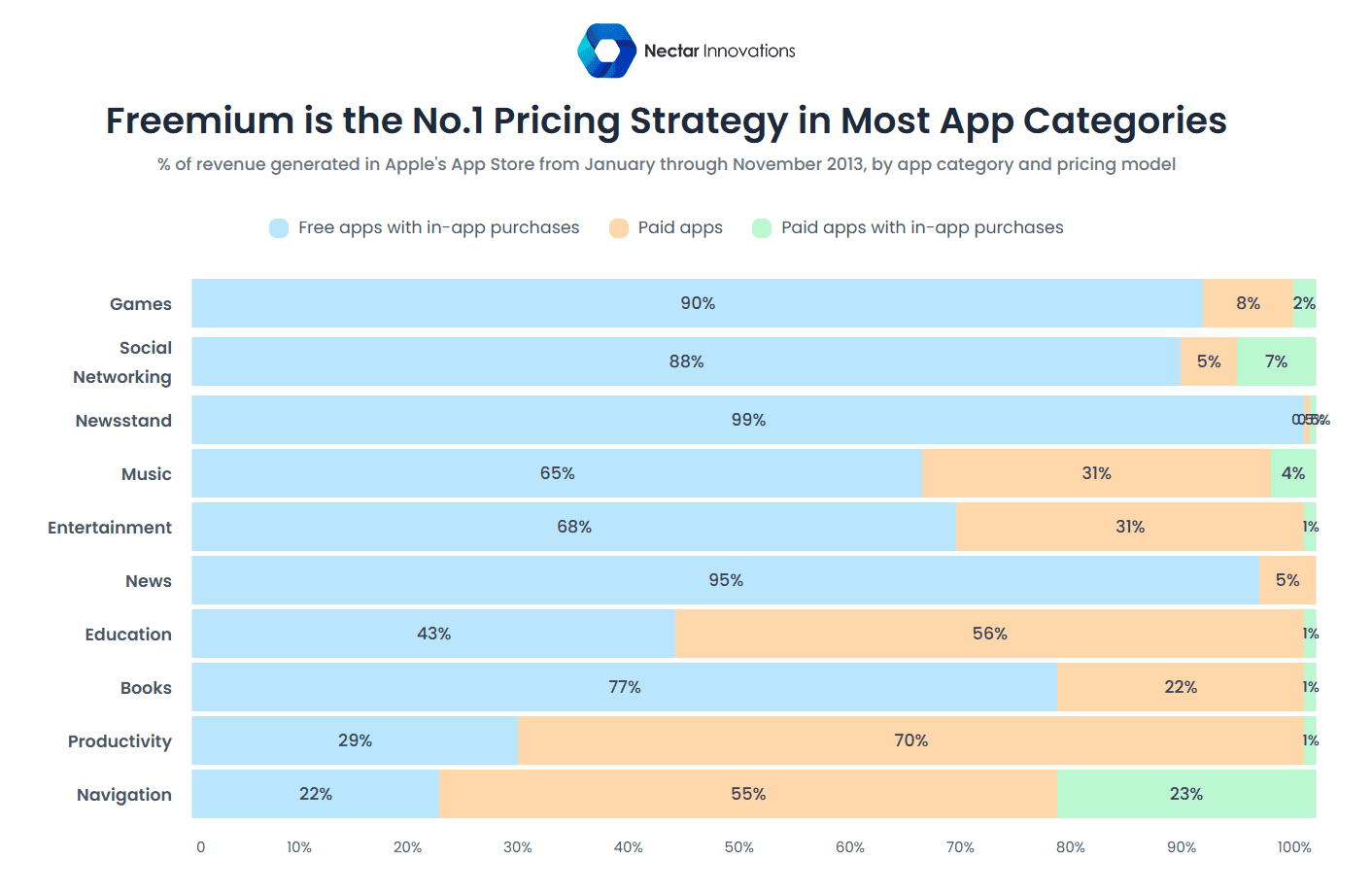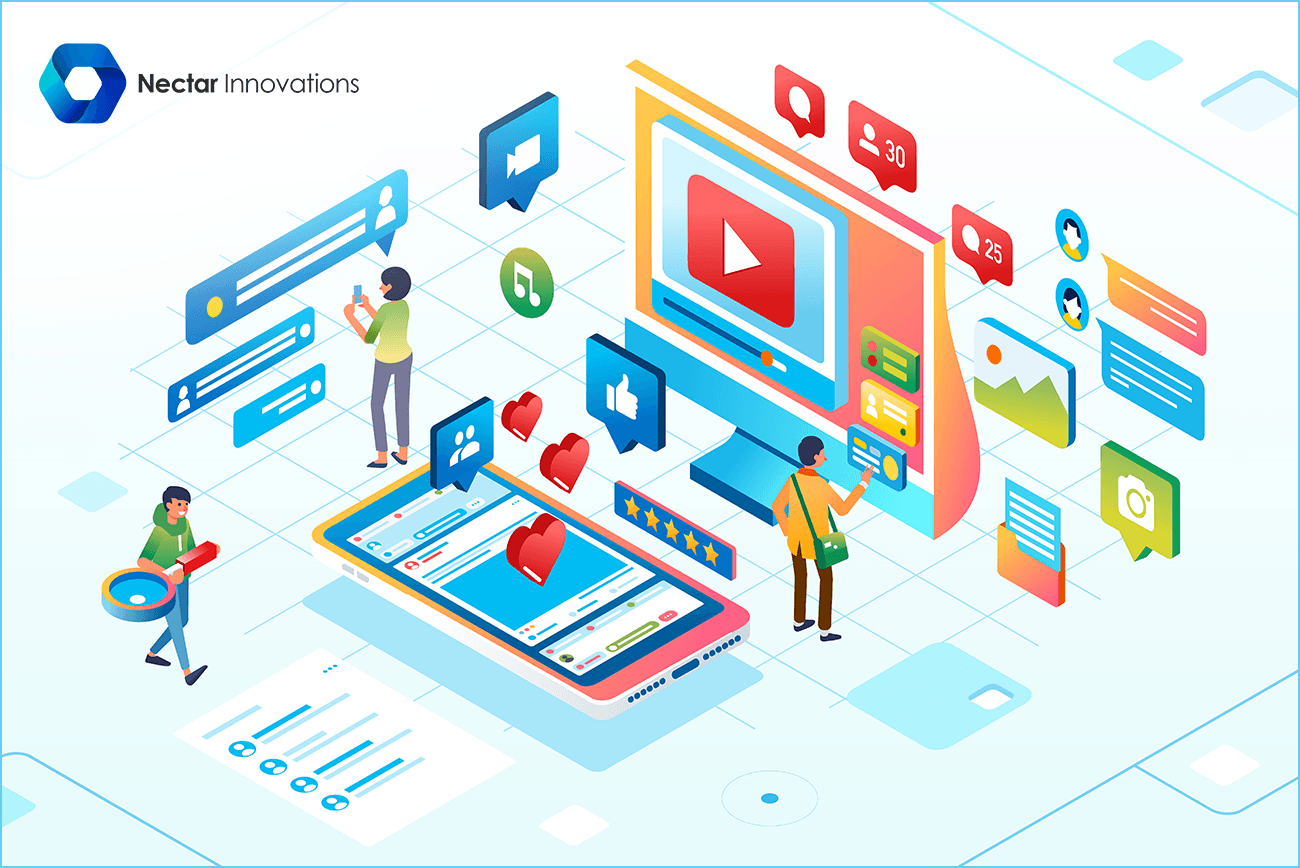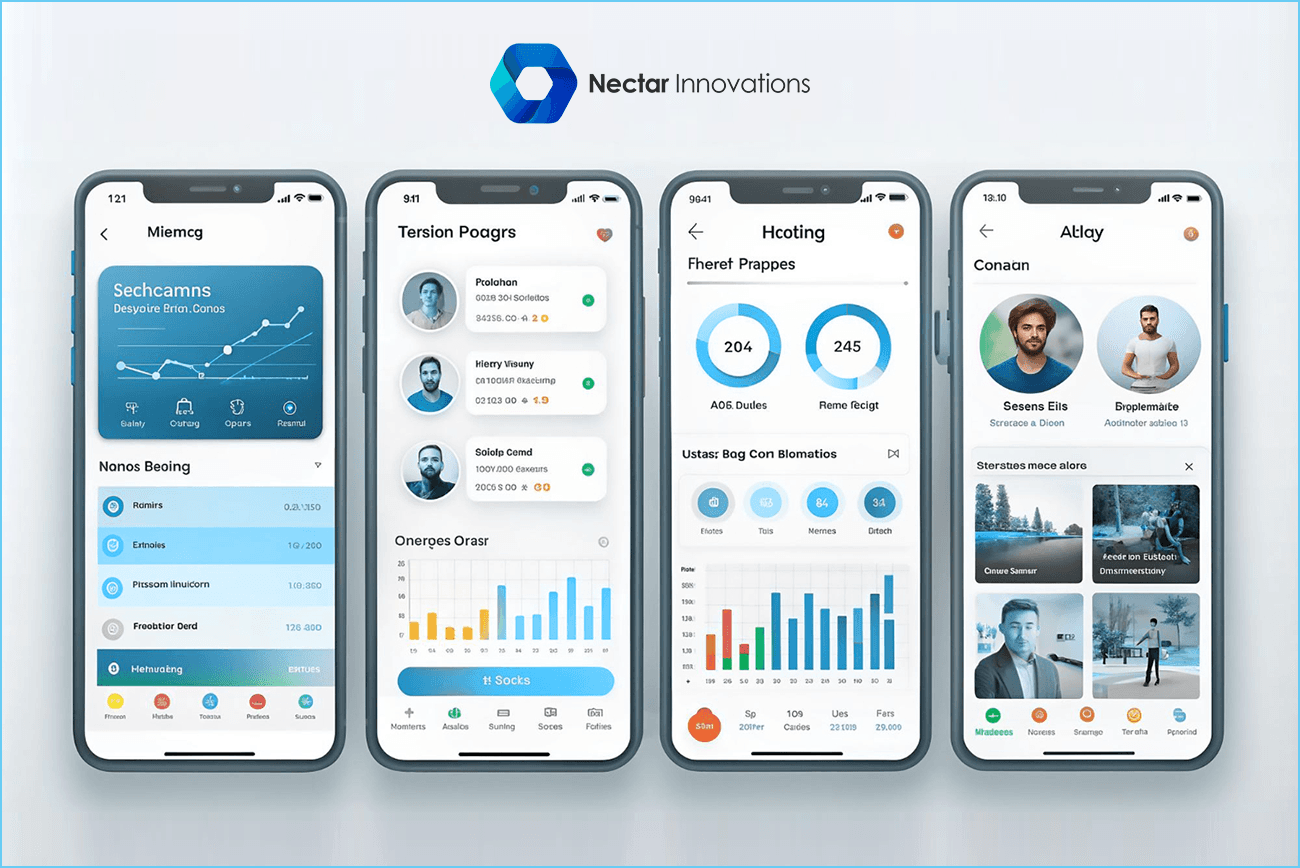But the future looks bright. The mobile app market sits at $252.89 billion in 2023 and shows signs of explosive growth at 14.3% CAGR. Tech startups have plenty of room to succeed since America's second-largest tech hub generates more than $145 billion in yearly revenue.
Success in scaling mobile apps demands more than just managing growth. Netguru's experts put it well: "Scalability is not just about handling growth, but also maintaining performance and efficiency during that growth."
Most founders learn too late that fixing bugs after launch costs 30-100 times more than catching them early in design or development. Building expandable solutions from day one becomes a vital part of startup mobile app development.
Our guide walks you through every step to build a mobile app that grows with your business. We cover everything from proving your idea right and picking the perfect tech stack to smart ways to make money and improve after launch.
Validate Your App Idea Before You Build

Did you know that 42% of startups fail because they build something nobody wants? You can save thousands of dollars and countless hours by proving it right before writing any code for your mobile app.
- The painkiller vs. vitamin test
The painkiller vs. vitamin test stands out as one of the best ways to prove your app idea right. A painkiller app solves real problems—users need it, they can't live without it. People stick around longer with painkiller apps, convert faster, and show higher lifetime value because your solution becomes essential to them.
Your app qualifies as a painkiller if:
- Users would struggle without your app if it vanished tomorrow
- People already pay money to fix this problem
- Your solution cuts down real losses (money, time, stress)
- The value clicks instantly without much explanation
Health & Fitness and Business apps naturally work as painkillers, while Travel, Gaming, or Media apps need extra effort to create that must-have feeling. Customer pain points fall into four groups—Service, Product, Process, and Emotional. This framework helps turn your vitamin idea into something people can't live without.
- How to run a smoke test or landing page MVP
Most agencies push for fancy features and charge $200,000 to $1,000,000. Smart founders start with a smoke test instead of spending $50,000 to $90,000 on a full MVP.
A landing page MVP helps you test your idea economically. One simple page can tell you if people want your app. Build a page that sells your app like it exists today. Include:
- A headline that shows clear benefits
- A short pitch about your app's solution
- Some visual mockups or concept art
- A way to capture emails through signup forms
Your landing page should convert at least 25% of visitors since they're just joining a waitlist. Notwithstanding that, don't just collect emails—talk to these people to learn about what they really need.
On top of that, it helps to run a "fake door" test with ads leading to a signup page. Let people know the app is coming soon when they try to sign up, but grab their contact info. This shows you who's ready to buy, not just window shopping.
- Analyzing competitors and user reviews
Learning about your competition sharpens your strategy, spots opportunities, and cuts risks. Search both app stores with keywords your future users might type, and check web alternatives to list direct and indirect competitors.
Get into their features, user experience, design, navigation, and unique selling points. Track everything in a spreadsheet, including how they price their products.
User reviews offer gold mines of information about what works and what doesn't in existing apps. Look for patterns in complaints and wish lists. These common gripes show exactly where your app can step in and fix things.
Starting a journey with proper validation builds strong foundations for your mobile app startup. This approach not only boosts your success chances but shows investors you've done your homework, improving your odds of getting funded by a lot.
Lay a Scalable Technical Foundation
Building a mobile app without a solid technical foundation is like building a house on sand - it will eventually crumble under pressure. Recent research shows that all but one of these users abandon apps that perform poorly. This highlights why your architecture choices matter right from the start.
- Choosing the right tech stack for your MVP
The right technology stack needs to balance your current needs with future growth. Mobile apps typically give you these options:
Cross-platform frameworks like React Native and Flutter let you develop for iOS and Android simultaneously. This approach gives you 30-40% cost savings while keeping performance strong for most flexible applications. These frameworks work great for startups that need to launch quickly with limited resources, especially when paired with an ai agent to streamline certain development tasks.
Your tech stack evaluation should look at:
- Your team's current expertise (the stack they already know is often the quickest way to build)
- Speed requirements (vital for competitive industries)
- Room for future growth
- Security features
- Modular design and future-proofing
Think of your app as a growing city with many intricate parts. A monolithic approach is like having one district that holds everything - updates create massive traffic jams and delays. Modular architecture creates separate but connected components that let you:
- Have multiple developers work independently (fewer code conflicts mean faster progress)
- Update specific modules without breaking the whole system
- Scale up smoothly as your user base grows
Clean architecture keeps business logic separate from user interfaces, databases, and frameworks. This makes your code easier to test and adapt. Architectural patterns like MVVM (for Android) or VIPER (for iOS) help break down applications into smaller, manageable pieces.
- Data security and privacy compliance
Today's mobile apps can access highly sensitive user data - from location tracking to health information. Multiple stakeholders in a single app often need to collect or share personal data.
GDPR and CCPA are now 5 years old and have strict data privacy rules. These regulations say you must:
- Get clear user permission for data processing
- Show clear privacy policies
- Put proper security measures in place
Missing these requirements could cost you up to €20 million or 4% of your annual global turnover under GDPR.
- Avoiding technical debt early
Technical debt builds up when you choose quick fixes over lasting solutions. You can't avoid it completely, but good practices from day one will help minimize it:
- Follow standard design patterns
- Use open-source code
- Know your project APIs inside out
Poor software design lets technical debt grow exponentially. Changes become more expensive over time. Apps with high technical debt are hard to maintain, risky to run, and impossible to estimate.
Note that fixing bugs in production can cost 30-100 times more than catching them early. Quality should be your priority from the start - it really pays off later.
Plan for Growth with Smart Monetization

Your app's sustainability depends on choosing the right monetization strategy. Subscription-based models generated approximately $120 billion globally in 2025. Learning about the financial impact of your monetization choices plays a vital role in startup mobile app development.
- Freemium vs. subscription vs. in-app purchases
Different app types benefit from specific monetization models:
Freemium model lets users access simple features for free and charges for premium capabilities. This model excels at user acquisition but needs careful balance. Users abandon apps with limited free features, while too many free features reduce payment incentives. Freemium apps convert 2-5% of users, so they need high volume to generate much revenue.
Subscription models create predictable recurring revenue and promote stronger customer relationships. Apps with subscriptions show 3-5× higher lifetime value compared to paid apps or those with only in-app purchases. This works best especially when you have content-heavy or service-focused applications that deliver ongoing value.
In-app purchases (IAPs) offer several options:
- Consumables (depleted after use, like game currency)
- Non-consumables (purchased once, like photo filters)
- Auto-renewable subscriptions
- Non-renewing subscriptions
- Hybrid monetization models for startups
One revenue stream no longer suffices in today's market. Modern successful apps rarely depend on a single source of income
Hybrid approaches combine multiple monetization methods and help startups:
- Meet different user priorities
- Keep revenue stable during market changes
- Maximize user lifetime value without affecting experience
To cite an instance, a winning strategy might include:
- Free tier with simple functionality and ads
- Premium subscription that removes ads and adds advanced features
- Optional one-time purchases for specific upgrades
This approach lets you experiment as your user base grows and adapt to market changes.
- How to arrange monetization with user value
Monetization should boost rather than harm user experience. Here are some eco-friendly practices:
- Personalization: Shape monetization approaches for different user segments based on their behavior
- Transparency: Build trust by showing users what they get for their money
- Continuous feedback: Learn about users to improve your approach
- Value at every level: Each tier must deliver clear benefits from free to premium
Track metrics like average revenue per user (ARPU), customer lifetime value (LTV), and churn rates to measure success. Note that finding the sweet spot between monetization and user experience builds sustainable growth for your startup mobile app.
Launch, Market, and Build a Community

Brilliant mobile apps can still fail without the right launch and marketing strategies. Building a community of active users plays a crucial role in startup mobile app development's sustained growth.
- App Store Optimization (ASO) basics
App Store Optimization remains essential to app discovery. About 63% of iOS users and 58% of Android users find new apps through store searches. Your app store page needs compelling, keyword-rich content that turns browsers into users. The app's listing requires a minimum 4.0-star average rating to boost conversion rates. Visual assets make a huge difference in conversion rates. An app preview video can increase conversions by 10-30%
- Creating pre-launch buzz and beta groups
The buzz should start weeks or months before launch. A pre-launch landing page with email signup forms helps capture interested users. You can offer early access or special discounts as incentives. Your app's social media handles need to be claimed early. Start posting engaging content that shows behind-the-scenes development and countdown updates.
Beta Family and similar platforms let you test your app with real people based on demographics and devices. Nomorobo's success story shows how they built a waitlist of 30,000 email addresses before launch. This gave them an eager initial user base ready to adopt their solution.
- Content marketing and influencer outreach
Companies that blog generate 126% more leads than those that don't. Your blog content should target search terms your audience looks for. Influencer marketing proves highly effective - 61% of consumers trust influencer recommendations while only 38% trust brand-produced ads. Engagement rates matter more than follower count in influencer selection. Micro-influencers (with 1,000-100,000 followers) achieve 60% higher engagement rates than macro-influencers.
- Building user communities around your app
Apps with thriving communities see much higher user retention and participation. In-app social features like chat rooms, forums, and discussion boards help users make meaningful connections. User-generated content through challenges and contests keeps the community active. Points, badges, and leaderboards serve as gamification elements that drive ongoing participation. Dedicated social spaces let users interact even when they're not using the app.
Post-Launch: Iterate, Measure, and Scale

Your mobile app's launch marks the beginning of a new chapter, not the end. Like other businesses, success after launch depends on how well you adapt based on ground performance.
- Collecting and acting on user feedback
User feedback becomes your most valuable asset after launch. Studies reveal that 87.8% of users report being more likely to do business with brands that respond to their feedback. About 89.2% of users view companies more positively when they resolve complaints.
These strategies help collect feedback effectively:
- In-app surveys and feedback widgets for immediate insights
- Session recordings to spot user difficulties
- Direct user interviews to understand qualitative aspects
The feedback loop needs proper closure. Respond to all input professionally, set clear expectations about implementation timelines, and thank users who share their thoughts. This approach creates stronger bonds with your customer base and ended up increasing loyalty while reducing churn.
- Key metrics to track after launch
The right metrics reveal your app's strengths and weaknesses. Monitor these essential elements:
- Retention rate (industry average 30-day retention hovers between 6-7%)
- Daily and Monthly Active Users (DAU/MAU ratio indicates stickiness)
- Crash rates and performance bottlenecks
- App Store ratings (target at least 4.0 stars)
- Churn rate (percentage of users who uninstall)
These indicators show which strategies work and where you need improvements. Session length, load times, and battery consumption provide deeper understanding.
- Avoiding feature creep
Feature creep—the gradual overload of unnecessary features—can ruin your app's usability and performance. Research shows that users rarely or never use 80% of features in average software products. Each added feature increases complexity, development time, and maintenance costs.
Here's how to prevent feature bloat:
- Define a clear product roadmap with specific goals
- Implement strong validation processes for new features
- Prioritize improvements to existing functionality over adding new capabilities
- Create standardized approval workflows for feature requests
- Budgeting for maintenance and updates
Your app's maintenance typically costs 15-20% of the original development budget yearly. A $100,000 app needs about $20,000 per year for upkeep.
Standard maintenance tasks include:
- Corrective maintenance (fixing bugs and defects)
- Adaptive maintenance (updates for new OS versions and devices)
- Perfective maintenance (enhancing functionality based on user data)
Regular investment is vital—in 2024 alone, major app stores removed 2.6 million apps labeled as 'abandoned' due to lack of updates. Regular maintenance keeps your app compatible with evolving operating systems and protects users from security risks.
Conclusion
Strategic planning and execution at every stage are crucial to build a flexible mobile app. This piece walks you through key steps that will help turn your app idea into a successful, scalable business.
You need to verify your idea before investing your resources. This process helps distinguish between painkiller and vitamin apps that determines your potential for sustainable growth. The right technical foundation gives your app the flexibility to evolve with user needs.
Smart monetization strategies make all the difference between apps that survive and thrive. Startups benefit most from the hybrid approach as it lets them adjust their revenue model based on their users' priorities.
Marketing and community building should start early. Build your audience before launch through strategic ASO, content marketing, and community participation. These initial efforts will pay off when you release your app.
Note that your launch day is just the start of your trip. Successful apps evolve based on user feedback and performance metrics. You must allocate resources to maintain and update your app for long-term success.
The mobile app market gives tremendous opportunities to startups that focus on scalable development. This detailed guide provides the knowledge to build an app that grows with your business, adapts to market changes, and delivers lasting value to users.
Your trip to creating a successful scalable mobile app begins today. Apply these strategies to your unique situation and watch your app grow from a simple idea into a thriving digital product.
Key Takeaways
Building a scalable mobile app requires strategic planning from idea validation through post-launch optimization. Here are the essential insights every startup founder should know:
- Validate before you build: 42% of startups fail due to lack of market need - use the painkiller vs. vitamin test and landing page MVPs to confirm demand before investing in development.
- Choose scalable architecture early: Fixing bugs in production costs 30-100x more than catching them early - invest in modular design and clean architecture from day one.
- Implement hybrid monetization: Apps using multiple revenue streams see 3-5x higher lifetime value - combine freemium, subscription, and in-app purchases for maximum flexibility.
- Build community before launch: 63% of users discover apps through store searches - start ASO optimization and community building weeks before your official launch date.
- Budget for ongoing maintenance: Plan to spend 15-20% of initial development costs annually on updates and maintenance to avoid app store removal and security vulnerabilities.
The mobile app market's $252.89 billion valuation and 14.3% growth rate create massive opportunities for well-executed apps. Success comes from treating scalability as a core requirement, not an afterthought, while continuously iterating based on user feedback and performance metrics.





